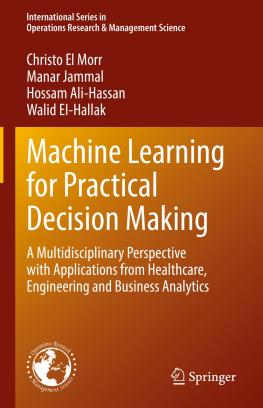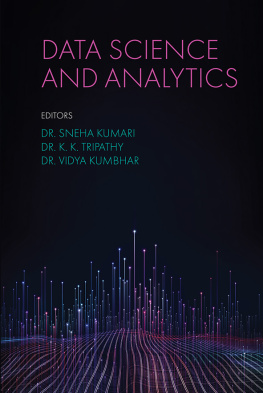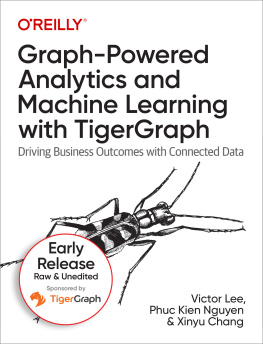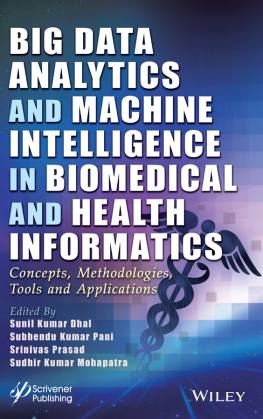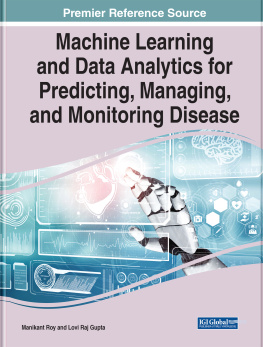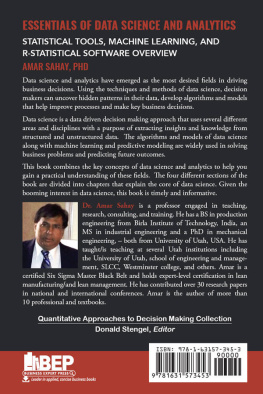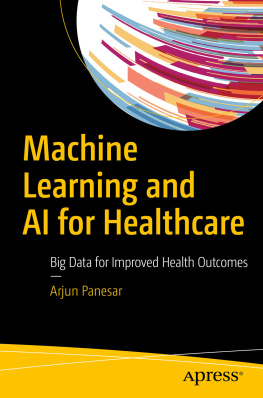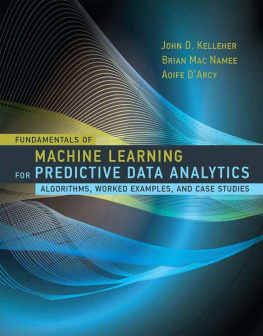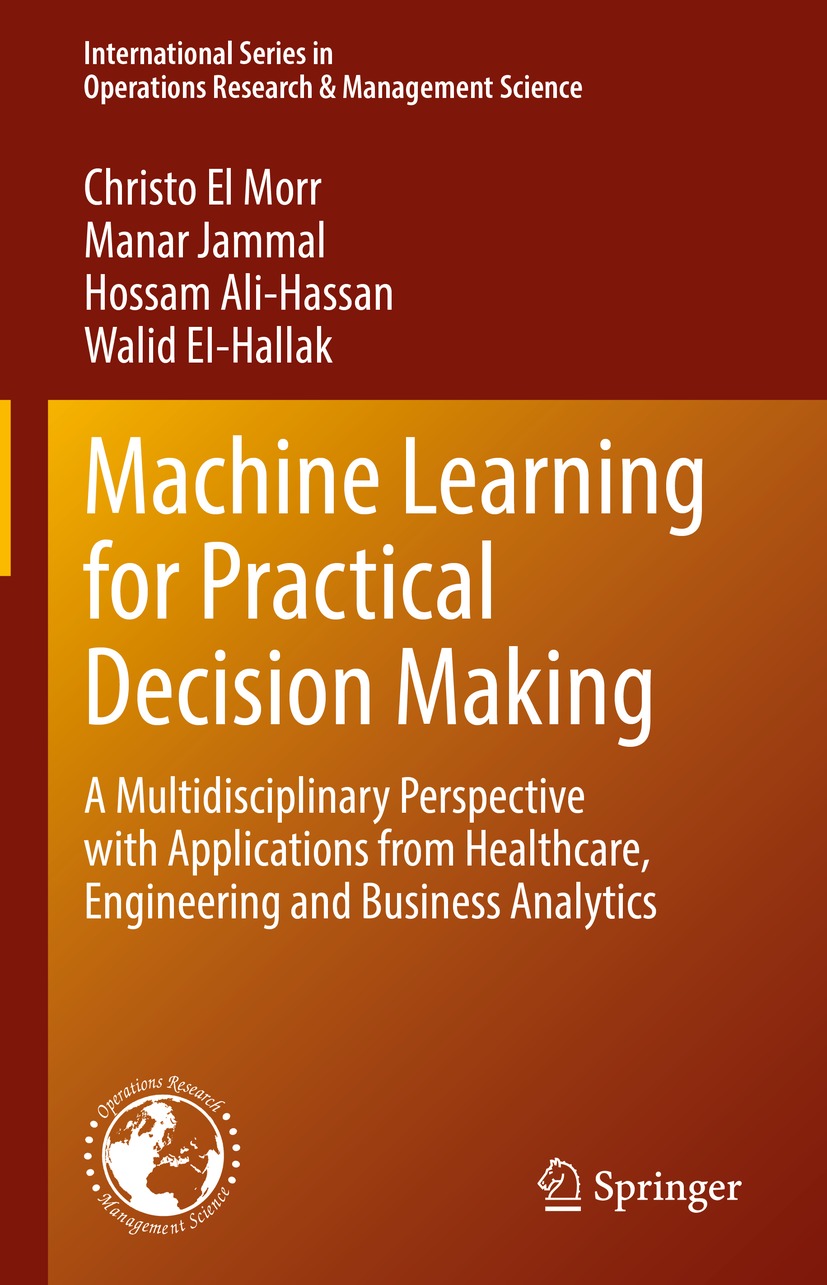Volume 334
International Series in Operations Research & Management Science
Series Editor
Camille C. Price
Department of Computer Science, Stephen F. Austin State University, Nacogdoches, TX, USA
Editorial Board
Emanuele Borgonovo
Department of Decision Sciences, Bocconi University, Milan, Italy
Barry L. Nelson
Department of Industrial Engineering & Management Sciences, Northwestern University, Evanston, IL, USA
Bruce W. Patty
Veritec Solutions, Mill Valley, CA, USA
Michael Pinedo
Stern School of Business, New York University, New York, NY, USA
Robert J. Vanderbei
Princeton University, Princeton, NJ, USA
Associate Editor
Joe Zhu
Foisie Business School, Worcester Polytechnic Institute, Worcester, MA, USA
Founding Editor
Frederick S. Hillier
Stanford University, Stanford, CA, USA
The book series International Series in Operations Research and Management Science encompasses the various areas of operations research and management science. Both theoretical and applied books are included. It describes current advances anywhere in the world that are at the cutting edge of the field. The series is aimed especially at researchers, advanced graduate students, and sophisticated practitioners.
The series features three types of books:
Advanced expository books that extend and unify our understanding of particular areas.
Research monographs that make substantial contributions to knowledge.
Handbooks that define the new state of the art in particular areas. Each handbook will be edited by a leading authority in the area who will organize a team of experts on various aspects of the topic to write individual chapters. A handbook may emphasize expository surveys or completely new advances (either research or applications) or a combination of both.
The series emphasizes the following four areas:
Mathematical Programming: Including linear programming, integer programming, nonlinear programming, interior point methods, game theory, network optimization models, combinatorics, equilibrium programming, complementarity theory, multiobjective optimization, dynamic programming, stochastic programming, complexity theory, etc.
Applied Probability: Including queuing theory, simulation, renewal theory, Brownian motion and diffusion processes, decision analysis, Markov decision processes, reliability theory, forecasting, other stochastic processes motivated by applications, etc.
Production and Operations Management: Including inventory theory, production scheduling, capacity planning, facility location, supply chain management, distribution systems, materials requirements planning, just-in-time systems, flexible manufacturing systems, design of production lines, logistical planning, strategic issues, etc.
Applications of Operations Research and Management Science: Including telecommunications, health care, capital budgeting and finance, economics, marketing, public policy, military operations research, humanitarian relief and disaster mitigation, service operations, transportation systems, etc.
This book series is indexed in Scopus.
Christo El Morr
School of Health Policy and Management, York University, Toronto, ON, Canada
Manar Jammal
School of Information Technology, York University, Toronto, ON, Canada
Hossam Ali-Hassan
Department of International Studies, York University, Glendon Campus, Toronto, ON, Canada
Walid El-Hallak
Ontario Health, Toronto, ON, Canada
ISSN 0884-8289 e-ISSN 2214-7934
International Series in Operations Research & Management Science
ISBN 978-3-031-16989-2 e-ISBN 978-3-031-16990-8
https://doi.org/10.1007/978-3-031-16990-8
The Editor(s) (if applicable) and The Author(s), under exclusive license to Springer Nature Switzerland AG 2022
This work is subject to copyright. All rights are solely and exclusively licensed by the Publisher, whether the whole or part of the material is concerned, specifically the rights of translation, reprinting, reuse of illustrations, recitation, broadcasting, reproduction on microfilms or in any other physical way, and transmission or information storage and retrieval, electronic adaptation, computer software, or by similar or dissimilar methodology now known or hereafter developed.
The use of general descriptive names, registered names, trademarks, service marks, etc. in this publication does not imply, even in the absence of a specific statement, that such names are exempt from the relevant protective laws and regulations and therefore free for general use.
The publisher, the authors, and the editors are safe to assume that the advice and information in this book are believed to be true and accurate at the date of publication. Neither the publisher nor the authors or the editors give a warranty, expressed or implied, with respect to the material contained herein or for any errors or omissions that may have been made. The publisher remains neutral with regard to jurisdictional claims in published maps and institutional affiliations.
This Springer imprint is published by the registered company Springer Nature Switzerland AG
The registered company address is: Gewerbestrasse 11, 6330 Cham, Switzerland
Preface
This book fills a gap in the machine learning literature. It presents the machine learning concepts in a very simple and practical way starting with a tangible example and building on it the theory. Each machine learning chapter starts with a presentation of the problem to solve, followed by a practical example on how the algorithm that solves the problem works, then comes the presentation of the machine learning algorithm theory and closing remarks (e.g., pitfalls, advantages limitations). This is followed by a set of key terms, a set of questions to test your understanding of the chapter material, a set of references to read more about the subject and hands-on lab exercises. The lab exercises allow readers to apply the chapters concepts and gain needed skills. To maximize the benefit for readers and to expose them to a myriad of machine learning languages and frameworks, the lab exercises (and sometimes the chapters material) are built around Python mainly, followed by R (and R Studio), and Weka. One of the strengths of this book is that it can be used by people who are exposed to programming or would like to learn how to program and those who prefer not to program but to solve decision-making problems with machine learning using simple graphical user interface. The former can use Python, the machine learning language par excellence, throughout all chapters, or R (limited to Chaps..

